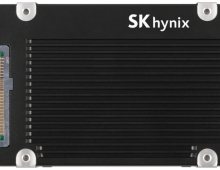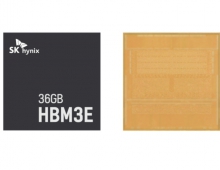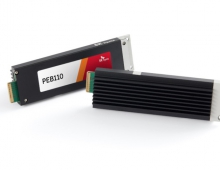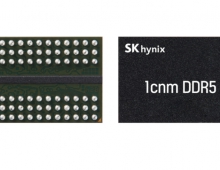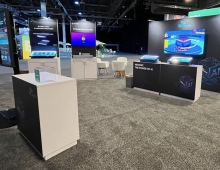
Elpida Delivers DDR3 SDRAM Memory Modules to Intel
Elpida announced the sample shipment of 512 Megabit DDR3 SDRAM components, 512 Megabyte Dual In-line Memory Modules (DIMMs) and 1Gigabyte DIMMs to Intel.
DDR3 SDRAM is the next-generation memory for servers and computing applications, and it is now the highest performing memory with data transfer rates up to 1066 Megabits per second (Mbps).
"The availability of these samples allows systems developers such as Intel to evaluate new features and GHz-class performance across all DIMM sockets on the motherboard with the memory controller and the processor," said Jun Kitano, director of Technical Marketing for Elpida Memory (USA). "The new DDR3 platform provides nearly twice the performance of the DDR2 architecture, and it is gaining great momentum."
The 512 Megabyte and 1 Gigabyte DIMMs are unbuffered for PC applications, and they are the same size and form-factor as the current-generation DDR2-based DIMMs. The 512 Megabit DDR3 components that are on the DIMMs were developed using Elpida's 90 nm process technology. The devices are organized as 64 million words x 8-bits, and they are claimed to achieve 1066 Mbps - nearly double the speed of DDR2-based devices. They also have a 1.5 Volt operation - a 17% power reduction versus DDR2. New features have been implemented in the DDR3 specification, including auto-calibration on the output buffer for high speed interface operation and interrupt reset for system flexibility.
Elpida originally announced details on the development of DDR3 SDRAM components on August 23, 2005.
The first module samples have been delivered to Intel. Engineering samples will be available to all customers in 2006, and volume production will begin in accordance with market demand.
"The availability of these samples allows systems developers such as Intel to evaluate new features and GHz-class performance across all DIMM sockets on the motherboard with the memory controller and the processor," said Jun Kitano, director of Technical Marketing for Elpida Memory (USA). "The new DDR3 platform provides nearly twice the performance of the DDR2 architecture, and it is gaining great momentum."
The 512 Megabyte and 1 Gigabyte DIMMs are unbuffered for PC applications, and they are the same size and form-factor as the current-generation DDR2-based DIMMs. The 512 Megabit DDR3 components that are on the DIMMs were developed using Elpida's 90 nm process technology. The devices are organized as 64 million words x 8-bits, and they are claimed to achieve 1066 Mbps - nearly double the speed of DDR2-based devices. They also have a 1.5 Volt operation - a 17% power reduction versus DDR2. New features have been implemented in the DDR3 specification, including auto-calibration on the output buffer for high speed interface operation and interrupt reset for system flexibility.
Elpida originally announced details on the development of DDR3 SDRAM components on August 23, 2005.
The first module samples have been delivered to Intel. Engineering samples will be available to all customers in 2006, and volume production will begin in accordance with market demand.

